Find out how the different activities you may already be doing, help to strengthen the different muscles in your body
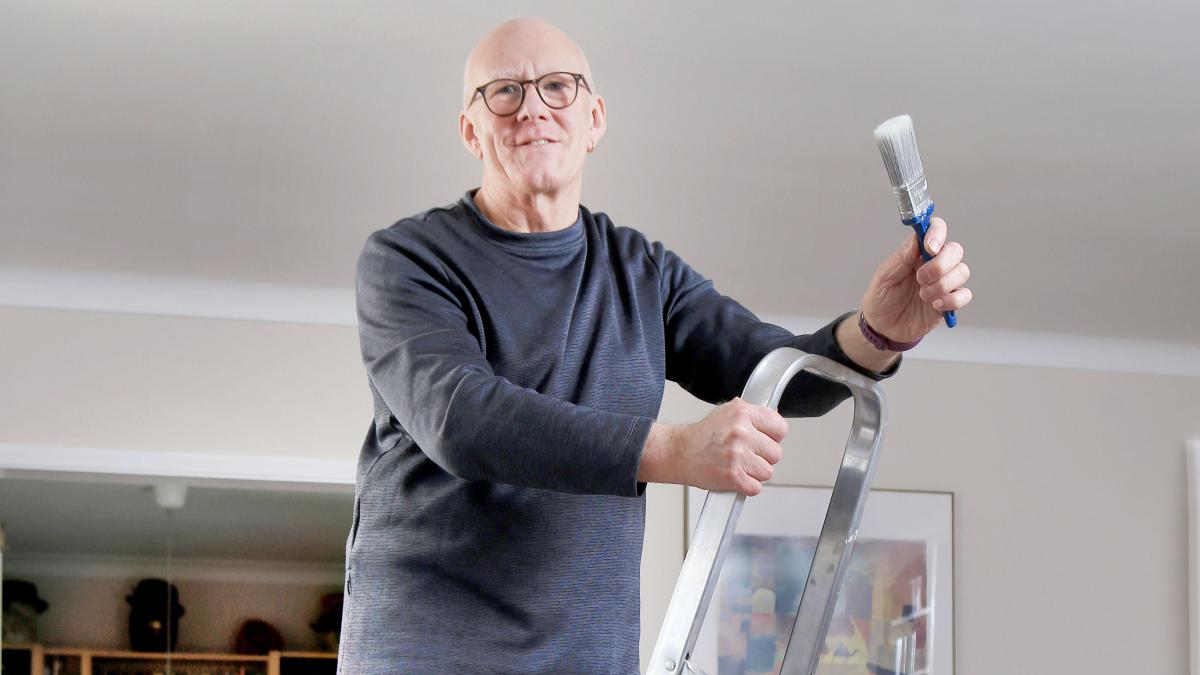
There are so many fun activities you can do to improve your strength and overall health. And if you're looking to improve your strength but don't know where to start, here are some examples.
Get stronger by dancing by Liz Bayley, a specialist dance physiotherapist based in London
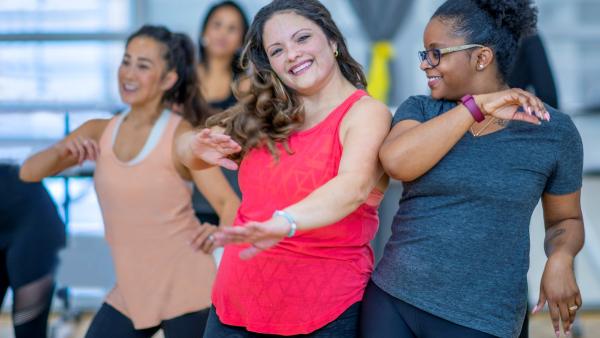
Dance is a fantastically fun and social way to get some physical activity into your life. It can help build endurance, give you a serious cardiovascular workout and improve balance.
Let’s visit a few of the most well-known and popular dances to see how they might be particularly beneficial, both physically and mentally.
Ballet
For those not performing at elite levels, you don’t need to dance en pointe (on the tips of the toes) to be able to enjoy the health benefits it has to offer.
Benefits: Ankle, leg, hip and back strength. Low intensity cardiovascular workout with some higher intensity in classes with more jumping. Lower-limb power. Increased flexibility.
Jazz
Jazz is a fusion of many different styles. It can be slow and lyrical or fast and powerful. Body isolations are often featured in class and choreography and are part of what gives Jazz its distinctive style.
Benefits: Whole body endurance, lower limb strength and power, balance, co-ordination, control, flexibility.
Tap
Tap is best known for the metal taps attached to shoes which allow the dancer to create sounds with their feet.
Benefits: Rhythm, co-ordination, bone health, cardiovascular workout.
Contemporary
Contemporary combines physicality with emotion and conscious use of the breath, which produces a kind of release in its movements.
Benefits: Core control for off-balance movements and floor work, upper body strength, learning how to work with the breath and focusing on the emotional content of movement can have additional therapeutic benefits.
Salsa
Salsa is one of the most popular social dances, meaning it is improvised with a leader and follower.
Benefits: Social interaction, improves stamina, balance, co-ordination, upper body dexterity, challenges reaction times.
Hip hop
Hip Hop grew by combining elements of tap, jazz, and swing, and now includes elements of locking, popping, and breaking and often involves floorwork.
Benefits: Moderate to high intensity cardiovascular workout, upper and lower body strength, mental stimulation from often highly complex and fast routines.
Ballroom
The array of different styles means each one has its own challenges and benefits. They range from extremely fast, bouncy, and energetic (quickstep and jive), to slow, controlled, and lyrical (rumba and waltz).
Benefits: Like salsa, social interaction, improves stamina, co-ordination, upper body dexterity, challenges reaction times. Heels test balance and work the calves.
Finding a dance to suit you
The most important thing is to choose one that you enjoy. Music can be influential in impacting people’s enjoyment, so try a few different classes and see what fits. If meeting people is high on your list, then partner dancing makes a lot of sense, but if fitness is the driving factor, then go for something of higher intensity, like Hip Hop. If you’re drawn to the more classical styles, then ballet and jazz could be for you. But, if you’re more of a free spirit and love being in bare feet, contemporary might be more your thing.
How can you avoid injuries?
The most important thing you can do to reduce your chances of getting injured is gradually expose yourself to any new physical activity and progressively make things harder. So, in simple terms, don’t jump straight into an advanced class, listen to your body, and take things slowly to start.
Sign me up!
If you’re interested in getting started, word of mouth is a great way to find good classes. Otherwise, check local dance schools, or contact an organisation such as One Dance and their Find a Dance Class page.
Flower power - how gardening strengthens your body
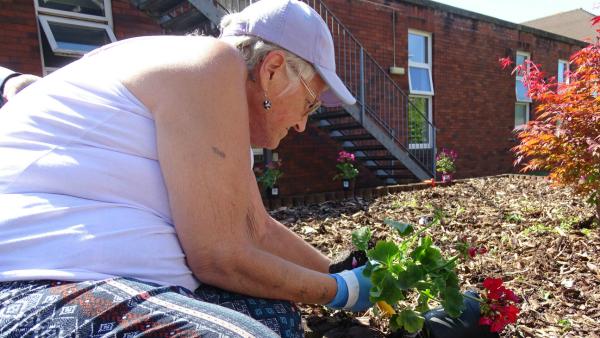
Ask any gardener why they enjoy gardening, and they will be able to list off a huge number and variety of rewards. Many gardeners find tranquillity in nature. They champion the benefits of getting outside, being physically active and filling their lungs with fresh air. For some it’s a chance to nurture, to be creative, or to understand our natural world. Gardening can reduce stress and enhance wellbeing.
But gardening can also be great activity for strengthening. If you’re already a gardener, or considering taking it up, the jobs you do around the garden can really make your muscles work harder. Whatever your activity level, becoming stronger helps you do more, feel better and stay active.
If you get the gardening bug, and keep it up regularly, you can help keep your heart healthy, improve your balance, lose weight and much more.
Take a look at some typical gardening activities, the way they help your body grow stronger, and tips on how to avoid injury.
Weeding
Weeding uses your muscles that pull, so lots of opportunity to strengthen your back and shoulder blades. It’s also really good for using your biceps and improving the grip in your hand.
If you get down on one knee to weed, you can do so by lunging. Lunges work your thighs and are fantastic for balance. They are a better alternative to bending over with an arched spine which can lead to back pain.
Mowing or pushing a wheel barrow
Mowing the lawn is particular good for strengthening your lower body, particularly the muscles in your bottom, the fronts of your thighs, and hamstrings (the tendons at the back of your knee). Pushing anything, either a lawn mower of wheel barrow, also engages the muscles in your shoulders, similar to the benefits of press-ups.
To avoid injury, start off slowly and gradually increase the pace of work over several minutes until your muscles feel warm.
Squats while you lift
In the garden you might spend time lifting heavy objects, from rocks to bags of compost. While you’re lifting why not squat, which is one of the best all-body strengthening exercises you can do. Squats strengthen your bottom, thighs and your entire core.
Start off slowly and gradually increase the pace of work over several minutes until your muscles feel warm
Reach up to prune
Gardening can involve a lot of stretching and reaching. As you prune slightly out of reach flowers or twigs, you are engaging your shoulders, core and the muscles that help move your arm forward.
Just be careful not to lose your balance.
Digging
Digging strengthens back and core muscles which helps lower the risk of developing back pain in the long term.
Start off slowly and gradually increase the pace of work over several minutes until your muscles feel warm
However much you enjoy gardening, it’s important to not overdo it. Take regular breaks and rest well. Stop if your muscles or joints start to feel sore.
For advice and instructions on strengthening exercises, including forward lunges, press-ups, and squats, click here.
Climb your way to strength by Uzo Ehiogu, a specialist musculoskeletal physiotherapist based in Birmingham
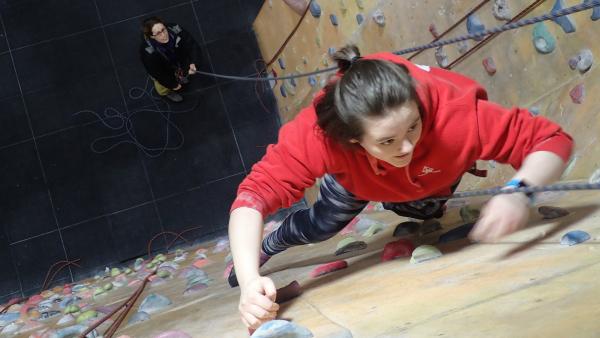
Climbing is an accessible activity for people who want to get stronger and improve their fitness. Most towns and cities have climbing centres, with more than 70 across the country. Many people start by trying out bouldering first. Bouldering involves climbing up short routes, at a maximum height of 4-5 metres, with matting to land on should you fall. This is a cheaper way to start as bouldering doesn’t require hiring ropes and equipment.
Benefits of climbing
Climbing is good your body, your mental wellbeing, and provides a great social activity to meet new people.
Physically, climbing is a great way to improve upper body and core strength and power. If you trip and catch your footing, you will generate strength to stop falling over. The average person takes half a second to generate all of their strength, but as we age this slows down.
Socially, climbing is less solitary than many other activities. Unlike the gym or running, climbers are rarely plugged into their phones when exercising! There are lots of opportunities between climbs to talk to other people about their tips and techniques.
Mentally, climbing can help improve wellbeing and self-efficacy. Climbing itself is an exercise in mindfulness. As you follow your climbing route, you have to be present in the moment and focus on your body and the course you are taking.
Muscle and connective tissue strengthening
Climbing increases the strength and size of muscles. If you are new to climbing you can quickly improve your upper body and core strength through your abdominal and back muscles. It’s also really good for increasing thickness in connective tissue, such as ligaments.
Additionally, climbing involves strengthening hands and grip. There is a well-known association between grip strength and frailty. If you find you are less able to open jars or squeeze secateurs, for example, you may be frailer in your body as a whole. Feeling physically frail can also affect your psychology.
Regular climbing can you make you physically stronger, less likely to fracture bones as you get older, and improve your mental wellbeing and self-efficacy
Bone mineral density
If you take up climbing regularly, a major benefit is increasing bone mineral density. People who have climbed over a long period of time have significantly thicker bones. This applies to the hands but also the full arm, from forearms to shoulders.
As we age, our bone mineral density is important. People over the age of 50 are more likely to develop osteoporosis. Falls can lead to fractures, most commonly hips, shoulders and wrist bones. If you regularly engage in climbing over years, your bone density is going to be significantly thicker (and less likely to fracture) than someone who hasn’t.
Advice for anyone wanting to take up climbing
For most people, climbing is safe to take up as long as you don’t have an injury or are currently having physiotherapy for an existing musculoskeletal issue. If you do have a pre-existing condition, or are unsure, first check in with your GP or physiotherapist for advice.
For anyone knew to climbing, you can expect some muscle soreness for one or two days after, especially in your forearms and shoulder muscles. If muscle soreness remains longer than 5-7 days then it would be sensible to speak to your GP or local physiotherapist.
Building strength through everyday activities
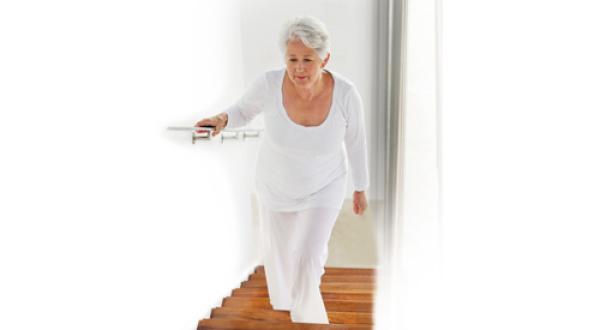
Becoming stronger and fitter is something we all have the power to do at any point in our lives, whatever our activity level is.
But it can feel overwhelming when you are living with a long-term condition. Many people fear that taking part in strengthening activities could make their condition worse and feel embarrassed about doing it in front of other people.
The good news is there’s lots of ways to incorporate this type of activity as we go about our daily lives – without ever setting foot in a gym. A strength exercise is any activity that makes your muscles work harder than usual and that doesn’t mean you have to pick up weights in order to do it.
The evidence shows that it helps people living with a long-term health condition to manage their symptoms and feel stronger both physically and mentally.
Have a look at some of the everyday activities below and think about whether you can incorporate them into your weekly routine, if you don’t already.
The UK Chief Medical Officers’ physical activity guidelines suggest people should incorporate strengthening activities into their life at least twice a week.
Walking up and down the stairs
Works: Quad muscles, glutes and hamstrings
Similar to: Lunges or box step-ups
Carrying the shopping to and from the car
Works: grip muscles, upper traps and core
Similar to: Farmers carry
Cycling your daily commute
Works: Heart and lungs, all the muscles in the legs and core
Similar to: A cardiovascular workout class but can also support balancing.
Walking round the park at lunchtime
Works: Improves the flexibility and strength of your joints
Similar to: Treadmill walking
Hoovering
Works: Transverse abdominal muscle, shoulder and leg muscles
Similar to: A cardiovascular workout or a hip hinge movement like a deadlift, and depending on the intensity could also mimic lunge-based exercises
Mowing the lawn
Works: shoulders, hamstrings and glutes
Similar to: Pushing a sled in the gym
Painting a room
Works: biceps and shoulder muscles
Similar to: A waiters carry exercise
Carrying a small child or a pet
Works: glutes, quads and core
Similar to: A front-loaded squat



































